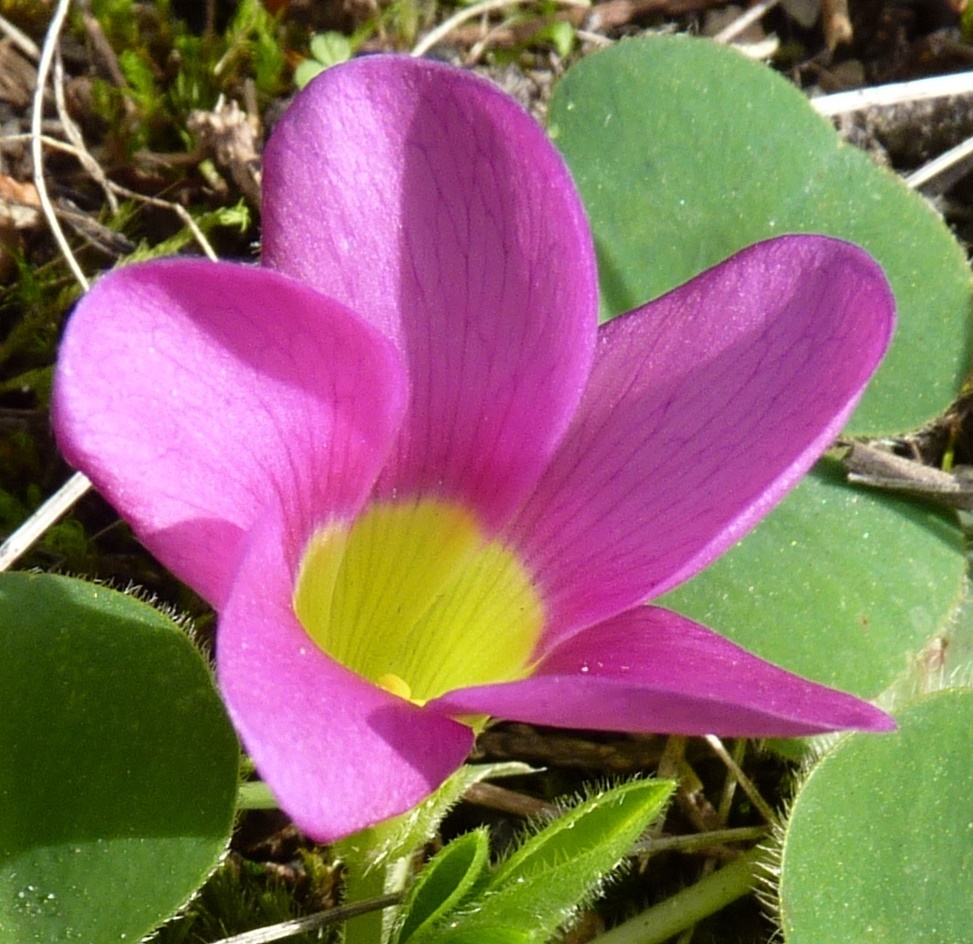
Annual and perennial herbs, sometimes shrubs, generally with tubers, bulbs or corms containing acrid juices (oxalates). Leaves alternate, palmately or, occasionally, pinnately compound, often of 3 leaflets (rarely 1), or reduced to a phyllode. There is an articulation (pulvinus) at the base of the petiole and each leaflet; stipules usually absent. Flower clusters umbels, cymes or racemes, occasionally solitary. Flowers bisexual, regular, 5-parted. Sepals 5, free or united. Petals 5, free or shortly united at the base. Stamens mostly 10 (rarely 15) in 2 whorls, outer whorl opposite the petals and sometimes united at the base. Ovary superior, mostly of 3-5 united carpels; styles 3-5. Fruit a loculicidal capsule or berry.
Family known through the clover-like genus, Oxalis, grown mostly as rockery plants. A few species have become environmental weeds.
Averrhoa bilimbi L. is a tropical plant (known as Bilimbi, Camias or Cucumber Tree) with fruits that are used for jellies, pickles and other conserves, while A. carambola L., Carambola, Caramba or Star Fruit, has a ribbed fruit that is eaten raw or pickled and that also has medicinal properties. Commercial plantations are found in N NSW and Qld. Some Oxalis have edible tubers or leaves.
Clover-like leaflets with articulations that permit 'sleep movements'; styles 5; fruit a 5-angled loculicidal capsule.
6 genera and 775 or more tropical to temperate species. Australia has 1 genus with 6 native species.
Source: (2002). Oxalidaceae. In: . Horticultural Flora of South-eastern Australia. Volume 4. Flowering plants. Dicotyledons. Part 3. The identification of garden and cultivated plants. University of New South Wales Press.
